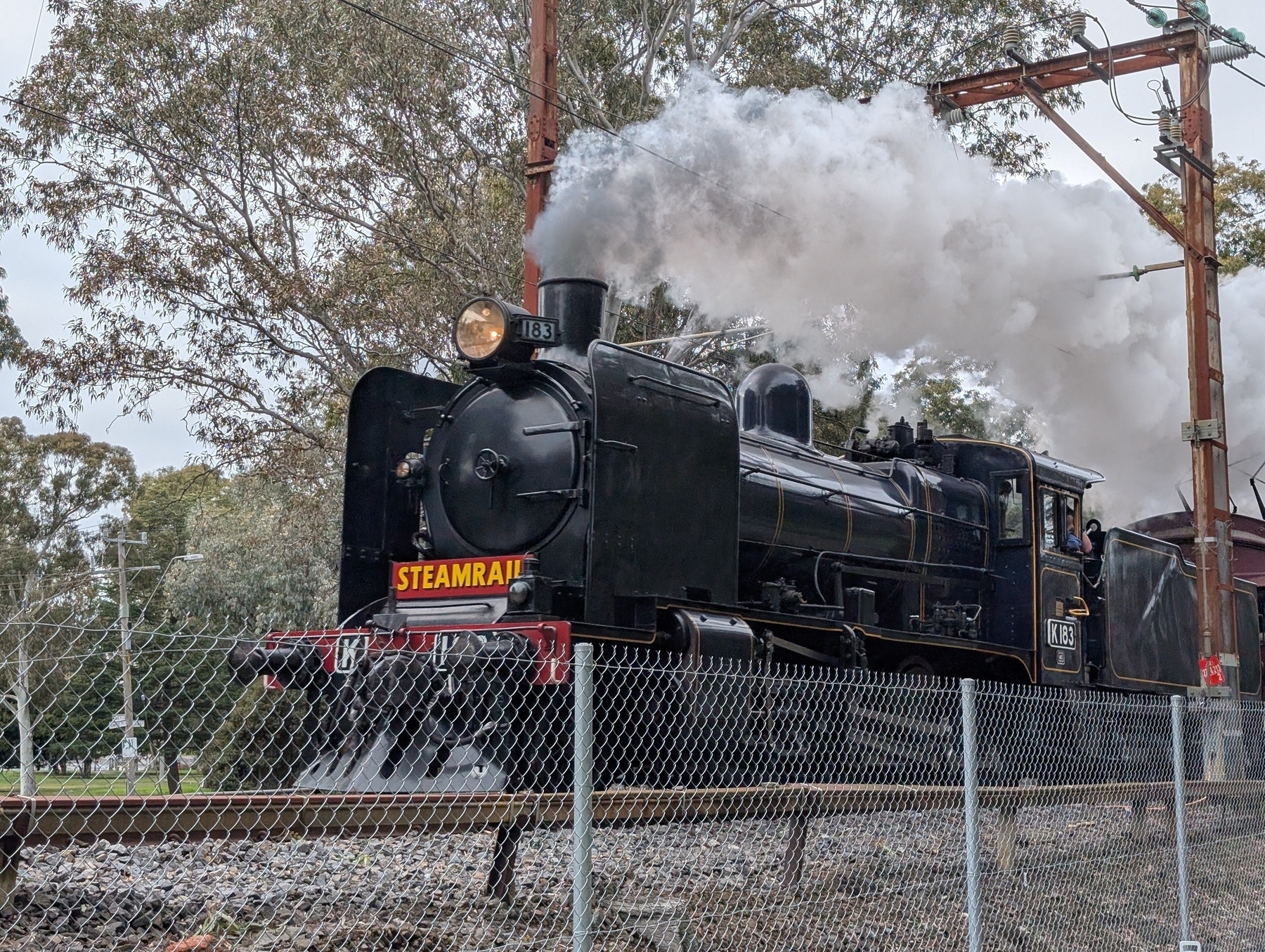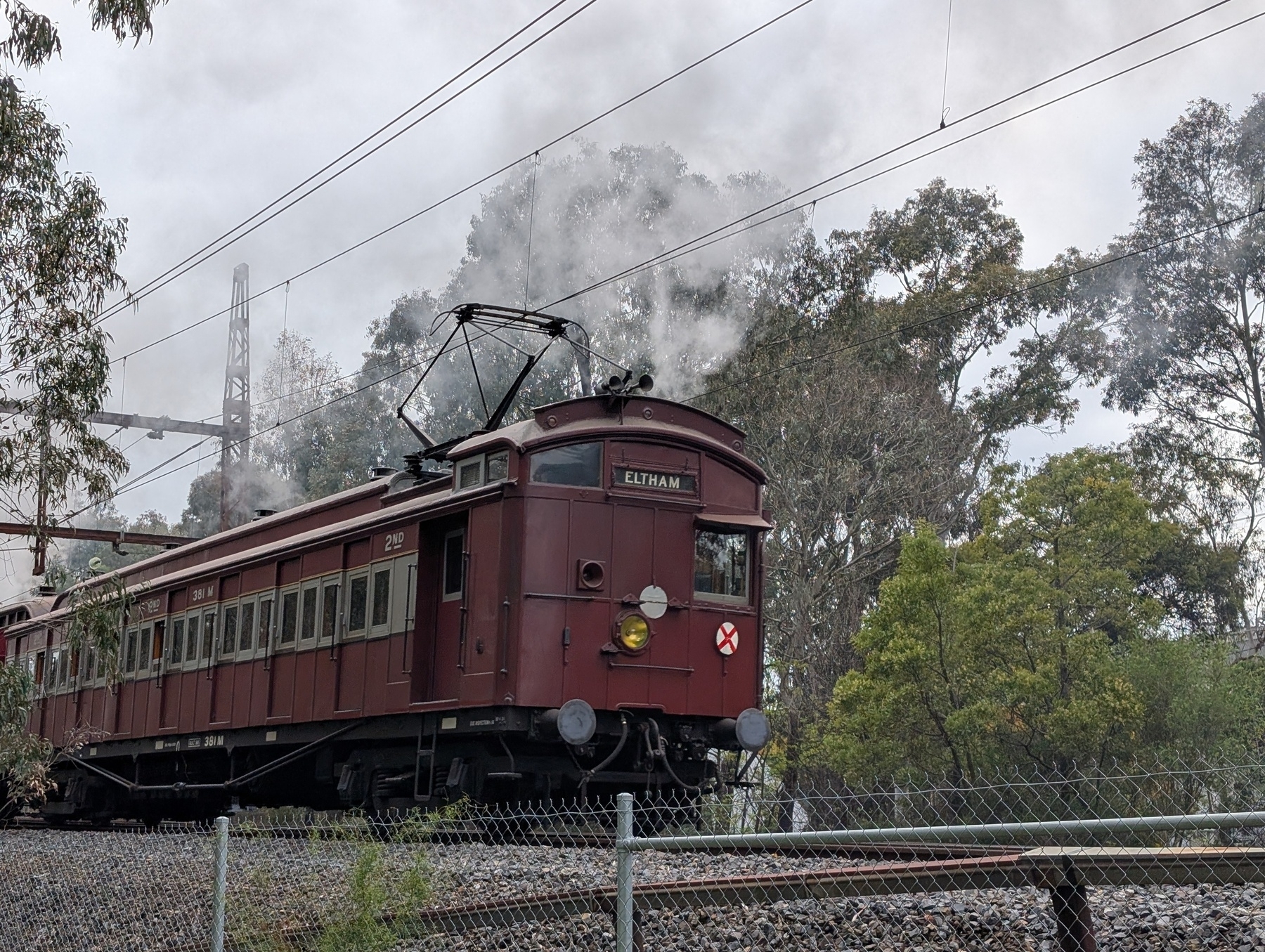-
Nice to think that we’ve finally reached the paperless office future we’ve all dreamed of, yet we still struggle to make sure things look good printed out because we’re now passing files as PDFs.
Why yes, I am trying to make a good looking PDF export from Confluence.
-
Virtual machines of early PC operating systems, such as Windows and OS/2 1.0, that run in the browser. For anyone else who’s interested in a nostalgic kick. Don’t forget to check-out the list of included software installable via the virtual floppy drive.
-
Timed my morning coffee perfectly today. Was able to photograph the steam train heading to the Wattle Festival this morning. It was pulling a Tait set, a rare sight for my eyes.


-
📘 Devlog
Shutting Down Nano Journal
With the move to Obsidian for my journalling needs, I shut down my bespoke journalling web-app. I deployed it on 26th August 2024, which makes it just over a year old. I did start using Obsidian on the 20th though, so it didn’t quite make it the entire year. Even so, not bad for something hand made and somewhat neglected. Most things I eventually abandon last way less than that. Continue reading →
-
🔗 Ludipe: Intro to Puzzle Design
Filing this under good tips for game development.
Via: GMTK weekly digest.
-
I just love these posts on game development making comments about the hardest part being the programming. Mate, I wish the hardest part of game development is the programming. For me, it’s by far the easiest. It’s everything else that I struggle with.
-
On the mailing list for someone who releases weekly digest newsletters using both Patreon and Substack. Both are now truncating the email, requiring me to click through to read the entire thing. Seems like a terriable middle ground between a newsletter (read the whole thing in my email client) and a website (read the whole thing in an RSS reader).
-
Words I’ve been misspelling all week:
- Utilization
- Prometheus
And for today, a word that I thought I misspelt but I actually got correct: Thanos.
US spelling intentional.
-
I shutdown my work laptop over the weekend, which means I usually start the week with zero projects open in my IDE. By the end of the week, the open project count is always much higher than I expect and I never remember how it get so high. This week, the count is 18 open projects.
-
Really enjoyed Brent Simmons post about his experience with Frontier. I really like the idea of sorts of software tools that provide so much customisation that a user can really make it their own.
-
Decided to move my journal over to Obsidian, taking up one of the 8, now 7, remaining vaults I have on my Obsidian Sync Plus plan. So far, so good. Offers a pretty decent writing experience — a nice thing about using Day One — while allowing entries to be plain Markdown files — which is nice about my bespoke solution. There are also some nice features with using a native app, such as having it launch on login, ready to start a new entry at a click of a button.
-
I wonder if anyone finds being an actor in stock footage ambitious. Guess it’s much like being an actor that just does commercials.
-
I can understand why Google’s choosing to block sideloading unverified Android apps, but this still disappoints me. The whole reason why I chose Android over iOS is the ability to side-load apps. Not sure what I’m going to do about this change.
-
📘 Devlog
Godot Project — Level 2-3 Update
Critical path for level 2-3 has been built. Continue reading →
-
A recent scramble for the need of activity on Slack, yet no-one knows what activities need doing. Choosing this course of action:

-
Tests failing on the build server so I’ve reverted to print debugging to find the cause. Part of me feels a bit dirty using this form of debugging, but there’s no doubting it’s effectiveness.
-
Tempting fate by walking out of the house without an umbrella. Deliberately, I might add. Is no umbrella better than a broken umbrella? 🤔
-
Oof! $149.00, paid to Apple for the right to notarise apps. Problem here being that I’ve not notarised any apps recently. Probably should release something, just to get my money’s worth.
-
Today I had the pleasure of driving this:


An oil-fired steam locomotive. Drove it from Castlemaine to Maldon, round-trip of about 40 km, as part of the driving experience offered by the Victorian Goldfields Railway. Very fun. Was anxious about it at first but turned out to be a great experience.
-
Back in Castlemaine for the weekend. Enjoying a walk around the Botanical Gardens.

-
📘 Devlog
UCL — Comparing UCL To Some Early Ideas
Comparing UCL to an idea for a hypothetical command language for a now-defunct CLI project, which aimed to combine shell-like REPL functionality with scripting capabilities. Continue reading →
-
It’s always something with NPM, isn’t it:

Here’s an idea: why don’t YOU rename that directory, NPM?
-
🔗 Wikipedia: White-winged chough
I’ve seen this bird before and I had no idea what they are: black, white tips on the wings, red eyes, and an interesting call. Their presence in a random YouTube video I was watching revealed the answer.
-
Currently waiting for a Zero Trust 2FA email to arrive. It’s been about 8 minutes and I still hasn’t received it. I could always request a new code, but the minute I do that, the old code comes up and I have to wait another 5 minutes for the new code to arrive. Of course if I don’t do that, and the original code email failed for some reason, then I’ve waited 8 minutes for nothing.
-
Why does Stripe delete test subscriptions after 90 days? What resources do these test subscriptions actually take up? I can understand deleting them after, say, 2 years, but 90 days seem a bit short.